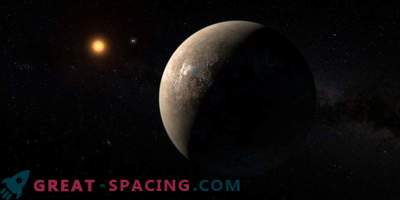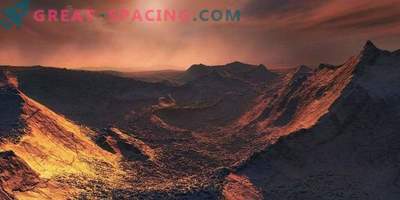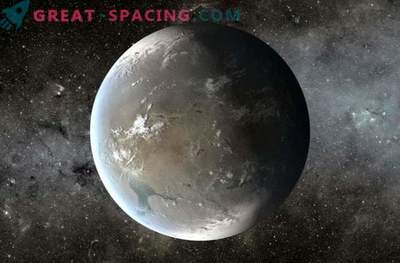
Artistic vision of exoplanets Kepler-438b
About 470 light years from us there is a rocky planet that is 1.12 times the size of Earth. It rotates around a star in the habitable zone, and therefore is capable of placing liquid water on the surface. It is about Kepler-438b, which is considered the most extra-solar planet similar to Earth.
Of course, researchers hope to find signs of life in this world. However, scientists from the University of Warwick rush to break our hopes, pointing out that the exoplanet is incredibly highly irradiated.
It turns out the native star of the planet Kepler-438 is a red dwarf harming its own planet. Every few hundred days, the star releases super flashes that are 10 times more powerful than any solar event. The strength of such a flash is equivalent to 100 billion megatons of TNT equivalent.
Super-flashes are bad news, but they are not able to turn the planet into a nuclear waste on their own. Therefore, the star decided to add also coronal mass ejections, which have enough power to separate the atmosphere of the planet and deprive the world of the opportunity to acquire life.

Comparing Exoplanet Sizes Kepler-438b
The earth is also constantly being attacked by the solar wind. But we are lucky to have a magnetic field that repels high-energy particles. It turns out that Kepler-438b does not have a magnetic field or the star flashes are so powerful that they make their way through the magnetospheric shield.
Since coronal mass ejections destroy the exoplanet atmosphere, the surface and potential life forms receive a huge dose of sterilizing ultraviolet and x-rays.
A similar situation is observed on Mars, where a weak atmospheric layer is destroyed by solar winds. But the situation is different only in that the Red Planet has forgiven the magnetic field many billions of years ago (the reasons remain unknown).
Can something like this happen to the Earth? We have a different situation, because the Sun is not transformed into a red dwarf, throwing the rays of death. Our star will become a red giant who just swallows the Earth.











































